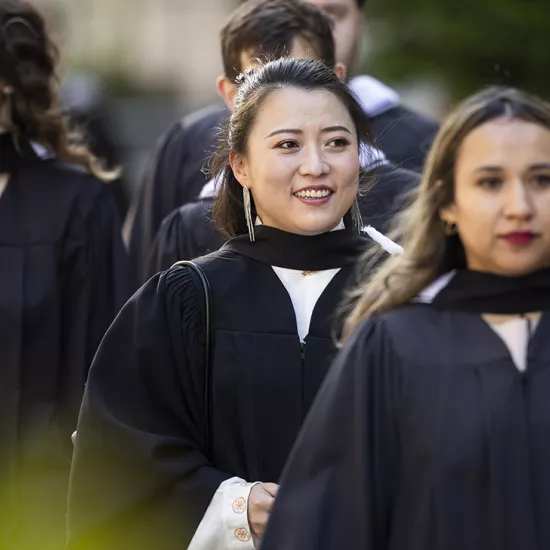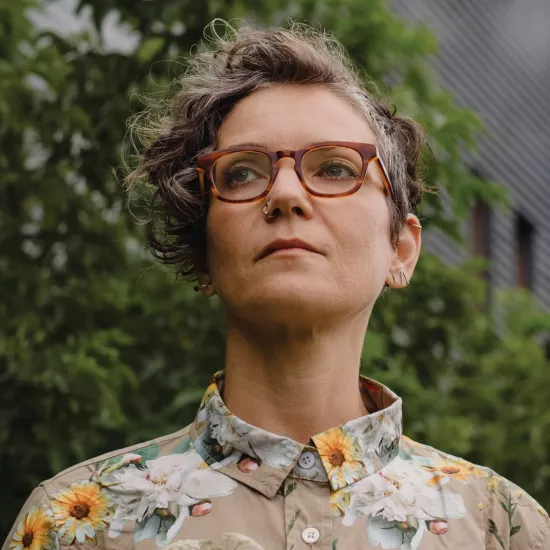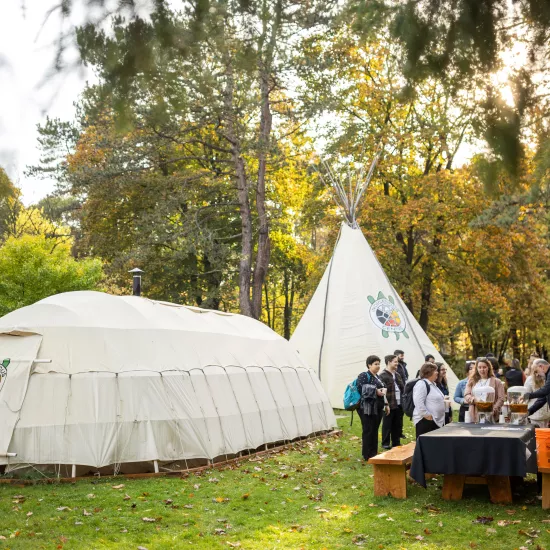Back to Class

“Wizards of Light” might sound like a Harry Potterism, but it’s actually a term Professor Claudiu Gradinaru uses to describe his role and that of his biophysics colleagues, Professors Virgis Barzda and Josh Milstein, in the research labs in UTM’s Department of Chemical & Physical Sciences (CPS).
“This instrumentation was built over the past six years, this being version 5.0 having gone through several iterations, and it incorporates lenses, mirrors, crystals and ultrasensitive detectors,” says Gradinaru while referring to a colourful photo of the lasers and the optical microscopes he currently uses in his lab. He was presenting his work to an assembly comprised of staff and faculty members in a UTM lecture hall on July 25.
The turnout was for Lab Liaisons, the second installment in a series that gives faculty members the opportunity to explain the work they do, and staff the chance to hear about how their work integrates within the bigger research picture. Along with Gradinaru, Professors Scott Prosser and Lindsay Schoenbohm also from CPS participated and presented an overview of their respective research.
“This sensitive, versatile equipment allows us to look at single molecules immobilized on a glass surface and watch them glow,” explains Gradinaru, who uses optical techniques to study proteins and investigate how they fold and interact with each other to better understand disorder on the nanoscale and its impact for human disease. “The fluorescence light coming from the molecules is a signature of what the proteins do, and we analyze this light to disentangle the molecular choreography that goes on in each cell in our body.”
Similar to Gradinaru, Prosser is also interested in macro-molecules, but explained that his work uses nuclear magnetic resonance (NMR) spectroscopy to study conformations and dynamics of proteins, molecular structures and enzymes. “NMR examines macromolecules through atom-specific radio-frequency signals, and if you are a chemist, these radio frequency signals can help piece together electronic environment and therefore structure,” explains Prosser.
Prosser further delineated NMR as being a “cousin” to Magnetic Resonance Imaging (MRI). They are similar in that they both pick up radio-frequency signals from molecules, but in the case of MRI, frequency is used to encode the position of water molecules. MRI users spend time thinking about the body as a concentration of water and fat. Prosser’s NMR-spectroscopy research is contributing to discoveries in amyloidosis diseases such as Alzheimer’s and prion diseases like Creutzfeld-Jakob.
“Taking you in a totally different direction so it gives you a sense of the breadth of the research we have going on in CPS, I am a geologist and earth scientist and spend a lot of time in the field doing my work,” began Schoenbohm, who has done geologic work in areas such as China and Argentina. Her Integrated Mapping Facilities lab at UTM produces geomorphic and geologic maps that document the “tectonic story” and helps to measure the earth’s changing landscape and surface. They use computer-based equipment, such as a sophisticated Global Positioning System (GPS) that has a 10cm vertical accuracy, which is much more precise than your average GPS, and also Geographic Information system (GIS) software for analysis.
“I am not solving disease like a lot of my colleagues in CPS,” says Schoenbohm. “But one place where we do have impact is in things like trying to understand how dangerous a geologic fault is based on how fast it is moving.”
The Office of the Vice-Principal, Research, organizes the Lab Liaisons annual series, and it is open to everyone wishing to attend. The forum provided the researchers the opportunity to express their gratitude to staff members for the ways in which they help to facilitate the work that takes place in the laboratories, and for supporting their efforts by keeping lab equipment functioning optimally.
Professor Bryan Stewart, UTM’s Vice-Principal, Research, echoed this sentiment in his introductory remarks to the assembly.
“On behalf of the entire research community here at UTM, I want to thank you and acknowledge you for the contributions that you make to running the university,” said Stewart. “It may not seem like a direct connection, but a lot of the contributions that go on behind the scenes, whether it's Financial Services, to keeping the buildings running or purchasing and procurement, all those sides of the university are absolutely essential to the core mission of the university, which includes teaching and research.”



